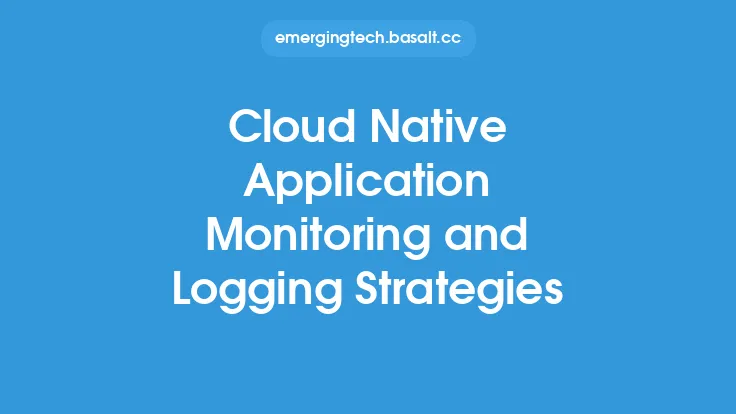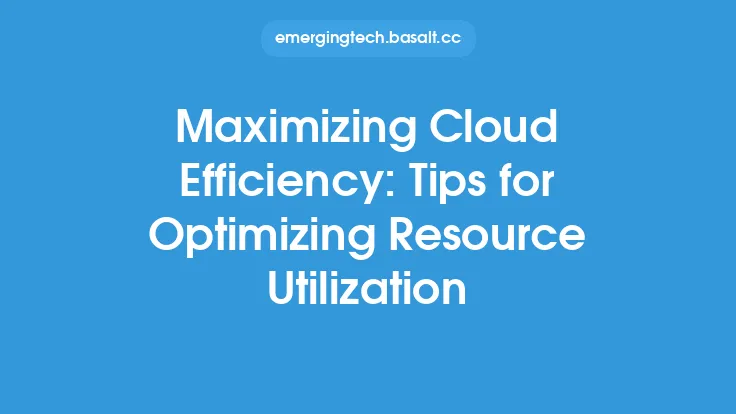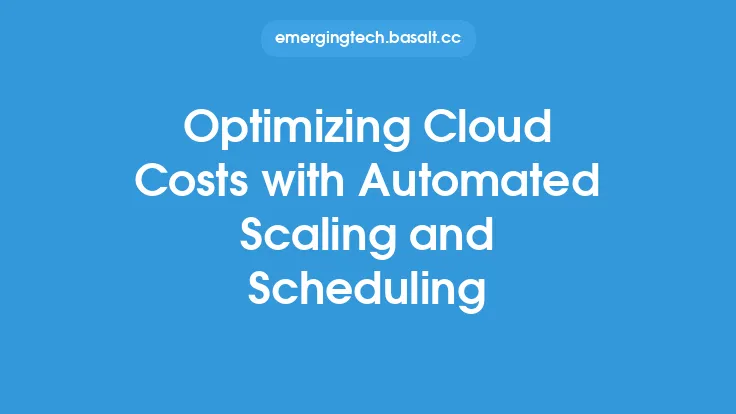Optimizing the performance of cloud native applications is crucial for ensuring a seamless user experience, reducing latency, and improving overall efficiency. Cloud native applications are designed to take advantage of the scalability, flexibility, and on-demand resources provided by cloud computing platforms. However, as the complexity and scale of these applications increase, performance optimization becomes a critical aspect of their development and deployment.
Understanding Cloud Native Application Performance
Cloud native application performance is influenced by a variety of factors, including the application's architecture, the underlying infrastructure, and the services used to support it. To optimize performance, it's essential to understand how these factors interact and impact the application's behavior. This includes considering the application's workload, user traffic, and data processing requirements, as well as the resources allocated to support it, such as compute power, memory, and storage.
Identifying Performance Bottlenecks
Identifying performance bottlenecks is a critical step in optimizing cloud native application performance. This involves monitoring the application's behavior, analyzing logs and metrics, and using tools to identify areas where the application is experiencing latency, errors, or other performance issues. Common performance bottlenecks in cloud native applications include inadequate resource allocation, inefficient database queries, slow network communication, and poorly optimized code.
Optimizing Compute Resources
Compute resources, such as virtual machines, containers, and serverless functions, play a critical role in cloud native application performance. Optimizing compute resources involves ensuring that the application has access to the right amount of resources, at the right time, and in the right location. This can be achieved through techniques such as autoscaling, load balancing, and resource pooling. Additionally, using optimized instance types, such as those with high-performance processors or specialized accelerators, can help improve compute-intensive workloads.
Optimizing Storage and Database Performance
Storage and database performance are critical components of cloud native application performance. Optimizing storage involves selecting the right storage type, such as block, file, or object storage, and ensuring that it is properly configured and provisioned. Database performance can be optimized through techniques such as indexing, caching, and query optimization. Additionally, using cloud-native databases, such as NoSQL or relational databases, can help improve performance and scalability.
Optimizing Network Performance
Network performance is a critical aspect of cloud native application performance, particularly in applications that require low latency and high throughput. Optimizing network performance involves ensuring that the application is deployed in a location that minimizes latency, using techniques such as edge computing and content delivery networks (CDNs). Additionally, using optimized network protocols, such as TCP/IP or HTTP/2, and configuring network settings, such as MTU and buffering, can help improve network performance.
Leveraging Cloud Provider Services
Cloud providers offer a range of services that can help optimize cloud native application performance. These services include load balancing, autoscaling, and content delivery networks (CDNs). Load balancing helps distribute traffic across multiple instances, improving responsiveness and reducing latency. Autoscaling allows the application to scale up or down in response to changes in traffic, ensuring that resources are allocated efficiently. CDNs cache content at edge locations, reducing latency and improving performance for users in different geographic locations.
Best Practices for Optimizing Cloud Native Application Performance
To optimize cloud native application performance, follow these best practices:
- Monitor and analyze application performance regularly, using tools such as logging, metrics, and tracing.
- Optimize compute resources, storage, and database performance, using techniques such as autoscaling, load balancing, and caching.
- Use cloud-native services, such as load balancing, autoscaling, and CDNs, to improve performance and scalability.
- Ensure that the application is deployed in a location that minimizes latency, using techniques such as edge computing and CDNs.
- Use optimized instance types, such as those with high-performance processors or specialized accelerators, to improve compute-intensive workloads.
- Optimize network performance, using techniques such as TCP/IP or HTTP/2, and configuring network settings, such as MTU and buffering.
Conclusion
Optimizing cloud native application performance is a critical aspect of ensuring a seamless user experience, reducing latency, and improving overall efficiency. By understanding the factors that influence performance, identifying bottlenecks, and leveraging cloud provider services, developers can optimize their applications for maximum performance and scalability. Following best practices, such as monitoring and analyzing performance, optimizing compute resources, and using cloud-native services, can help ensure that cloud native applications meet the demands of modern users.





